Welcome to On Verticality. This blog explores the innate human need to escape the surface of the earth, and our struggles to do so throughout history. If you’re new here, a good place to start is the Theory of Verticality section or the Introduction to Verticality. If you want to receive updates on what’s new with the blog, you can use the Subscribe page to sign up. Thanks for visiting!
Click to filter posts by the three main subjects for the blog : Architecture, Flight and Mountains.
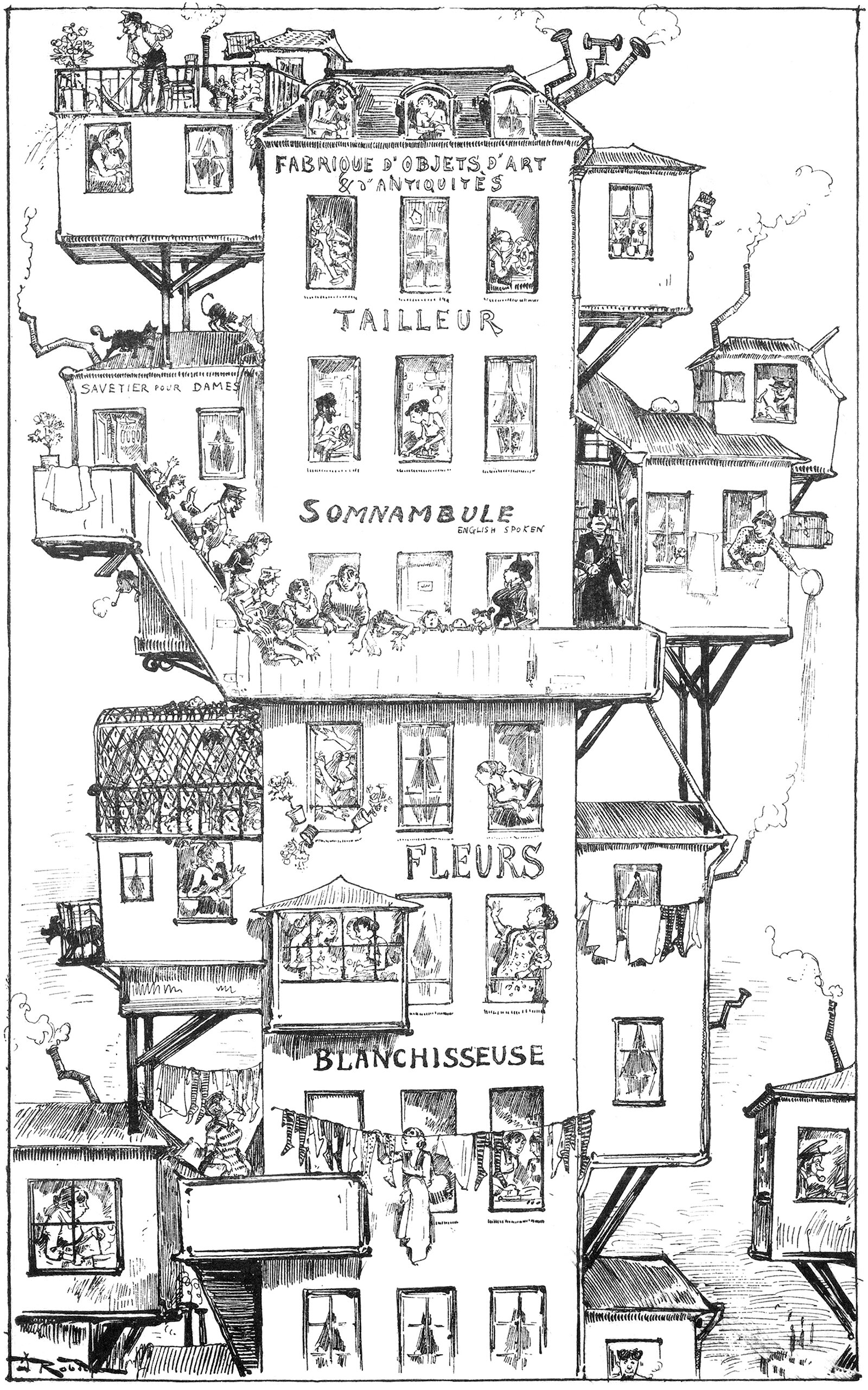
Albert Robida’s Eighteen-Story House
The above illustration was drawn by Albert Robida for his 1883 novel Le Vingtième Siècle, or The Twentieth Century. The novel describes a future vision for Paris in the 1950’s, focusing on technological advancements and how they affected the daily lives of Parisians. Here he shows what an apartment building might look like.
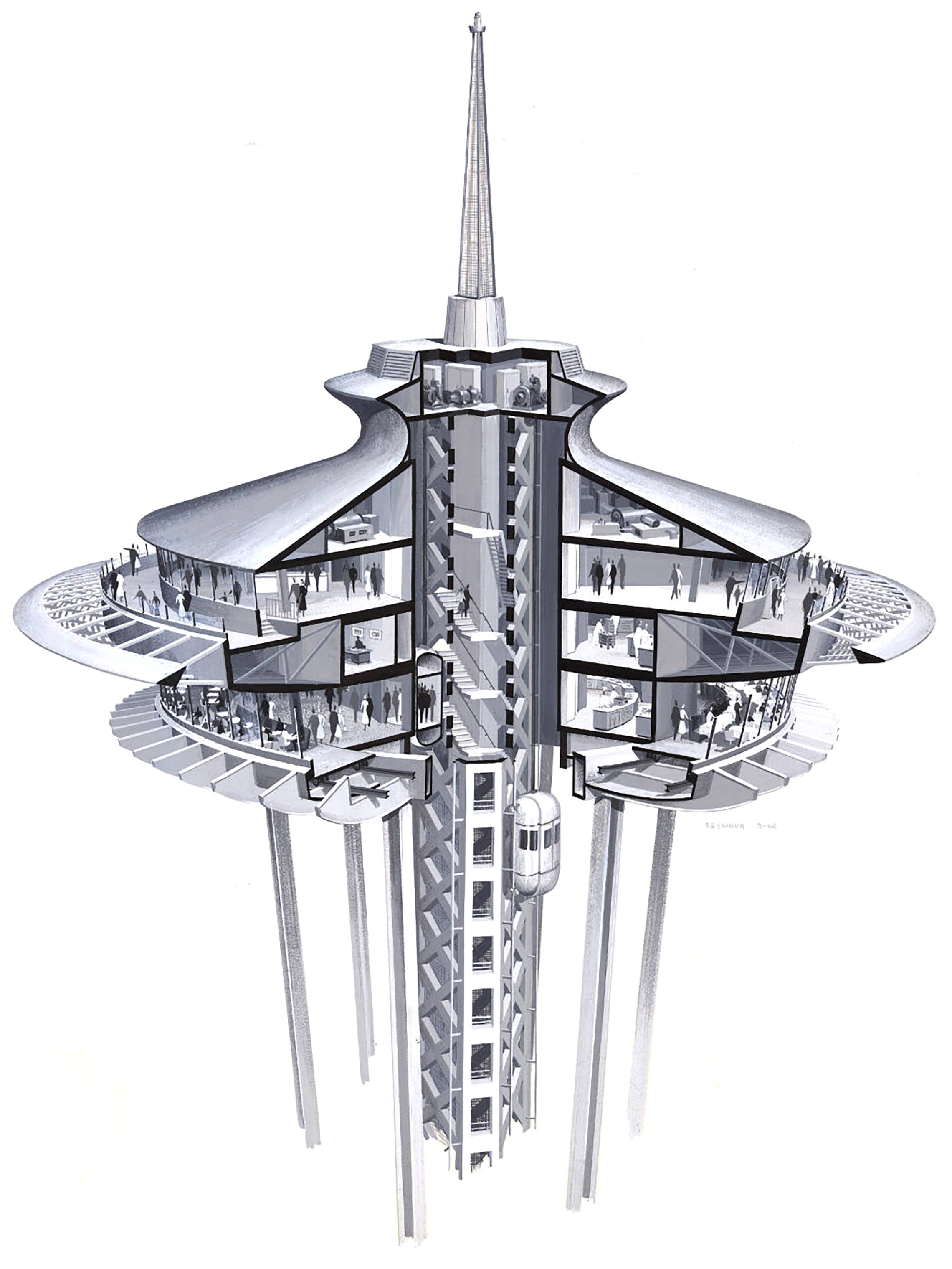
The Seattle Space Needle and Uninterrupted Verticality
I recently visited the Space Needle while on a trip to Seattle, and the experience was a masterful example of uninterrupted verticality. Throughout the entire visit, I had visual access to my surroundings, and this made the experience much more meaningful than a typical observation tower or skydeck. This is because the lift experience is normally buried deep inside a building, so it doesn’t have views to the outside. This severs the experience of verticality and abstracts the act of ascension and descension. Not the case at the Space Needle, however, and it was fantastic.
“The highest of mountains is capable of severity, a severity so awful and so fatal that the wiser sort of men do well to think and tremble even on the threshold of their high endeavour.”
-George Mallory, English Mountaineer, 1886-1924.
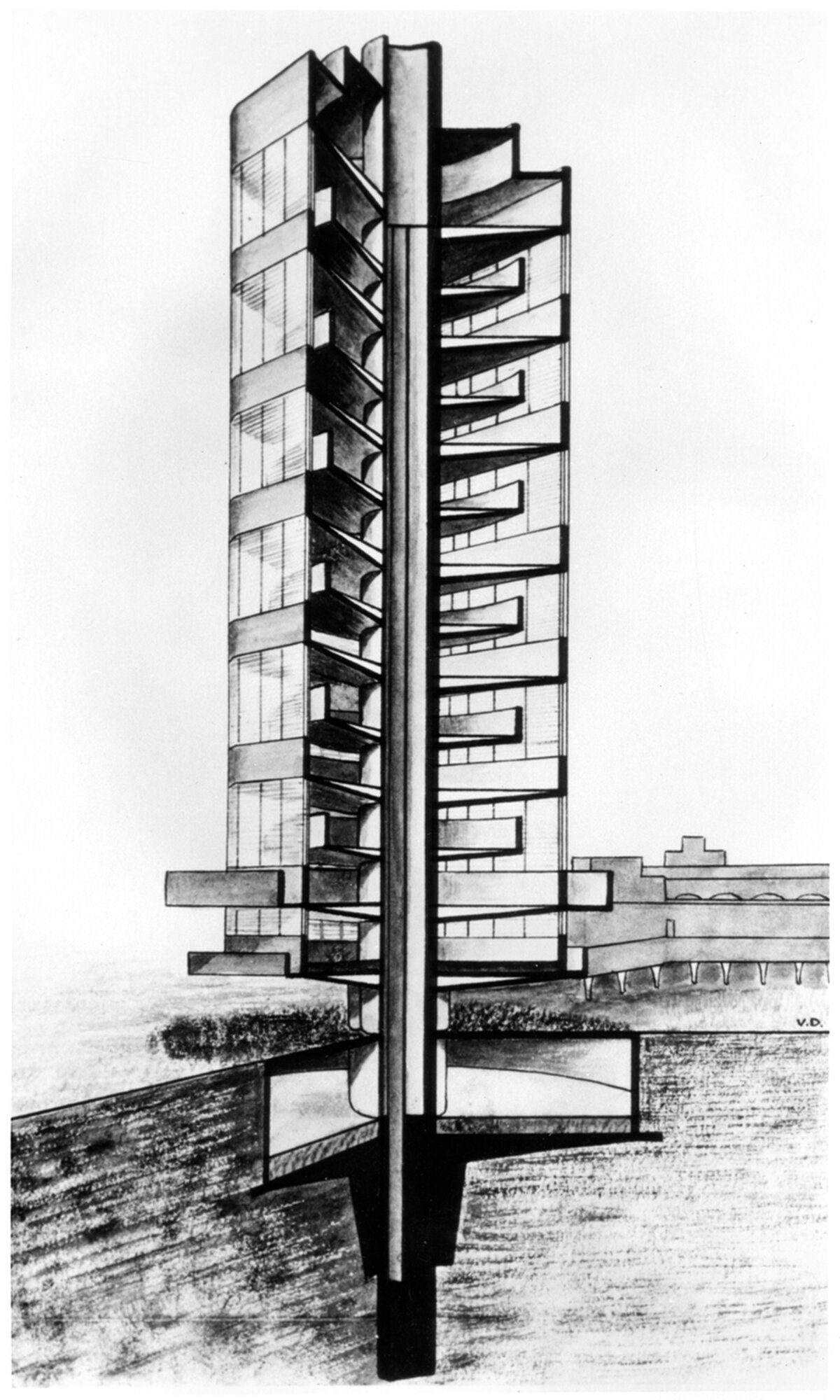
The Tree and the Skyscraper
Pictured above is a cutaway drawing of Frank Lloyd Wright’s SC Johnson Research Tower in Racine, Wisconsin, built in 1936. This little tower is famous for its structure, which functions like a tree. There’s a central trunk, or core, with floors cantilevering off it like branches. This removes the need for any perimeter columns since all the structural loads transfer back to the central core. There’s also the large taproot foundation, as Wright called it. This functions like the roots of a tree, providing stability to the overall form. Wright was well aware of the tree metaphor, and he used it to sell the vision to his client. It wasn’t the first time he tried to make a tower structure function like a tree, but it’s quite possibly the purist example of the metaphor to ever get built.
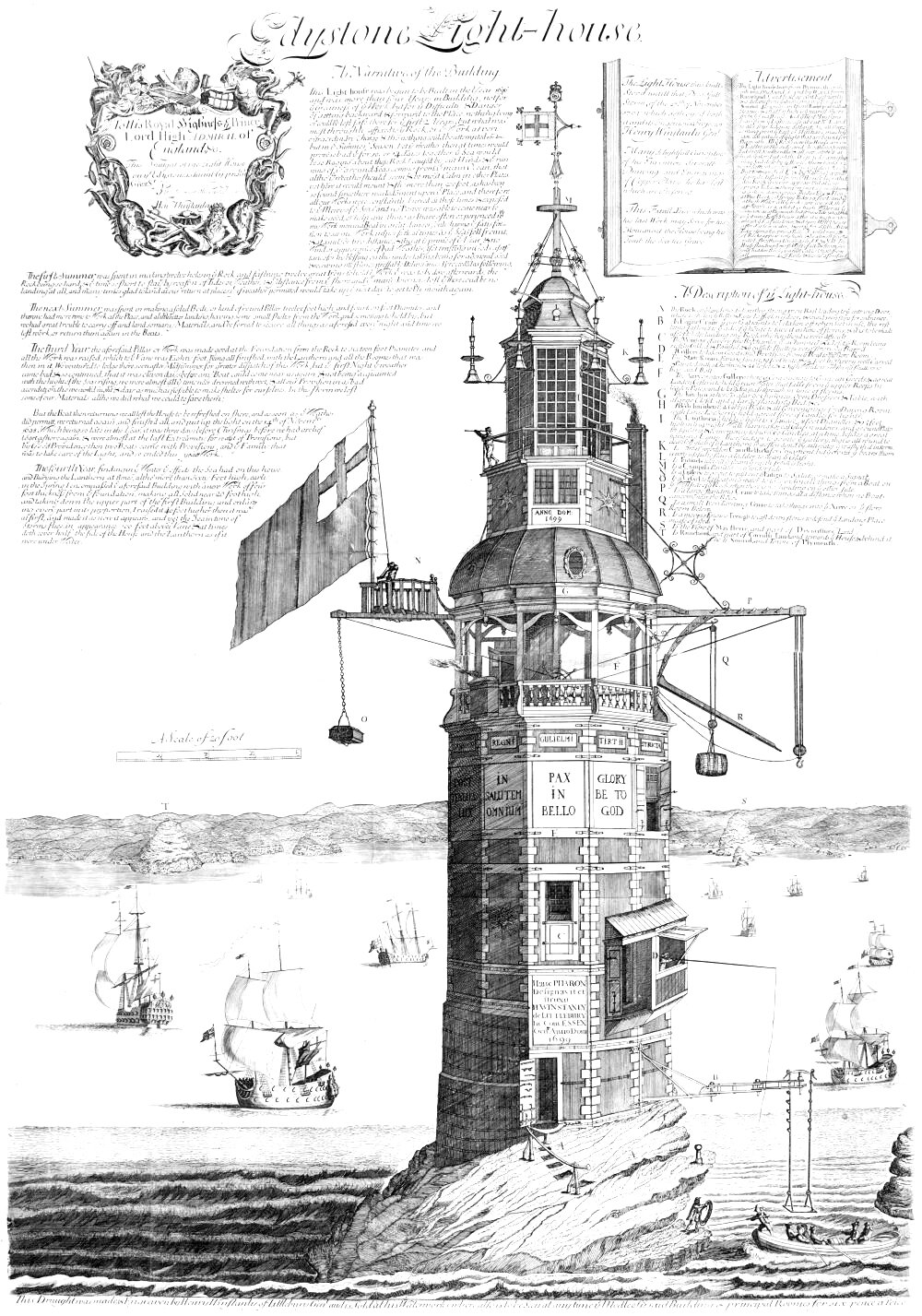
Winstanley's Eddystone Lighthouse
Lighthouse design is all about visibility. These small towers act as beacons for ships at night, alerting captains to various landforms and aiding in navigation. The taller these buildings are, the further away they can be seen. Therefore, the effectiveness of any given lighthouse is based on verticality. Pictured above is the first recorded offshore lighthouse in the world. It was built from 1696 to 1698 off the coast of Southern England, on a shallow reef known as the Eddystone Rocks.
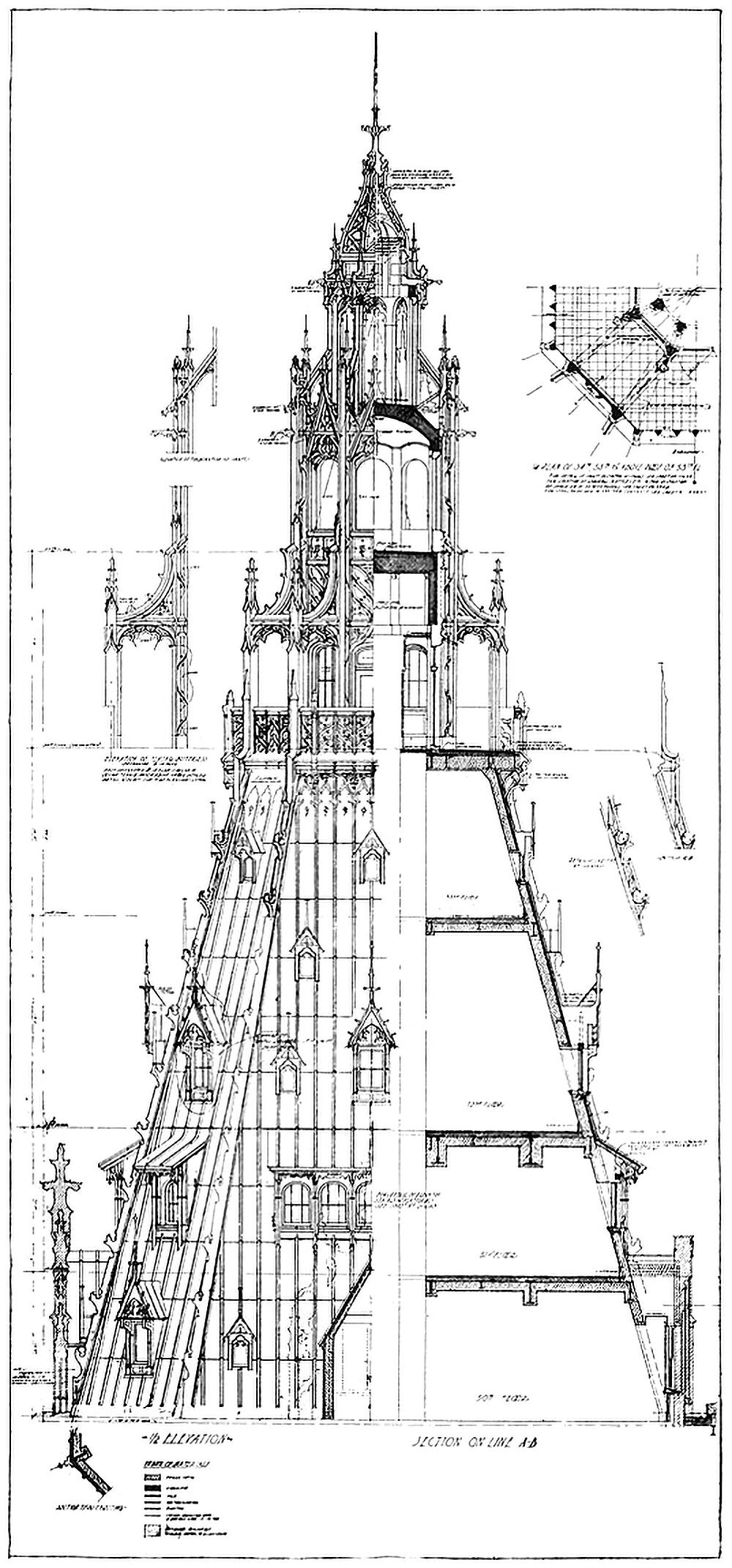
The Woolworth Building and the Question of Ornament
Pictured here is a combined elevation and section showing the crown of the Woolworth Building in New York City. Completed in 1912, the tower was the tallest building in the world at the time, and featured Neo-Gothic detailing throughout. As the drawing shows, this detailing is largely superficial, however. This is highlighted by the stark contrast between the left and right hand side of the drawing. This dichotomy between exterior and interior raises a couple questions related to verticality.
"[Getting to the top of Everest is] a matter of universal human endeavor, a cause from which there is no withdrawl, whatever losses it may demand."
-Günter O. Dyhrenfurth, German mountaineer and geologist, 1886-1975.
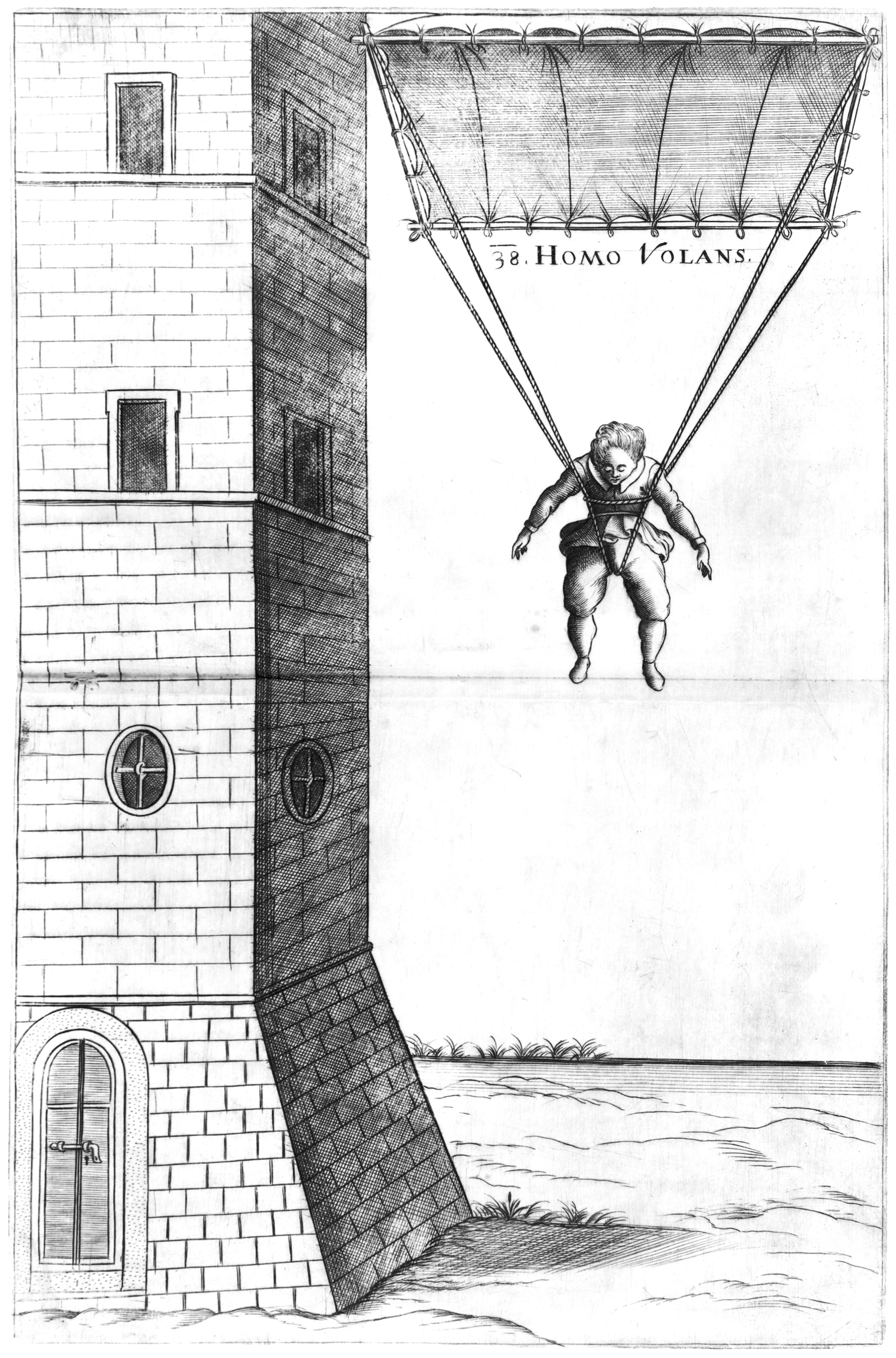
How to Fall : An Early History of the Parachute
Throughout the history of human flight attempts, the number one cause of death and injury has been a fall from a high place. In the early days of flight attempts, most examples involved jumping from a high perch and trying to stay in the aloft for as long as possible. Alongside these attempts at flight, others were concerned with the art of falling. How could a person leap from a high place and return to the surface safely? The resulting paths of thought make up the early history of the parachute.
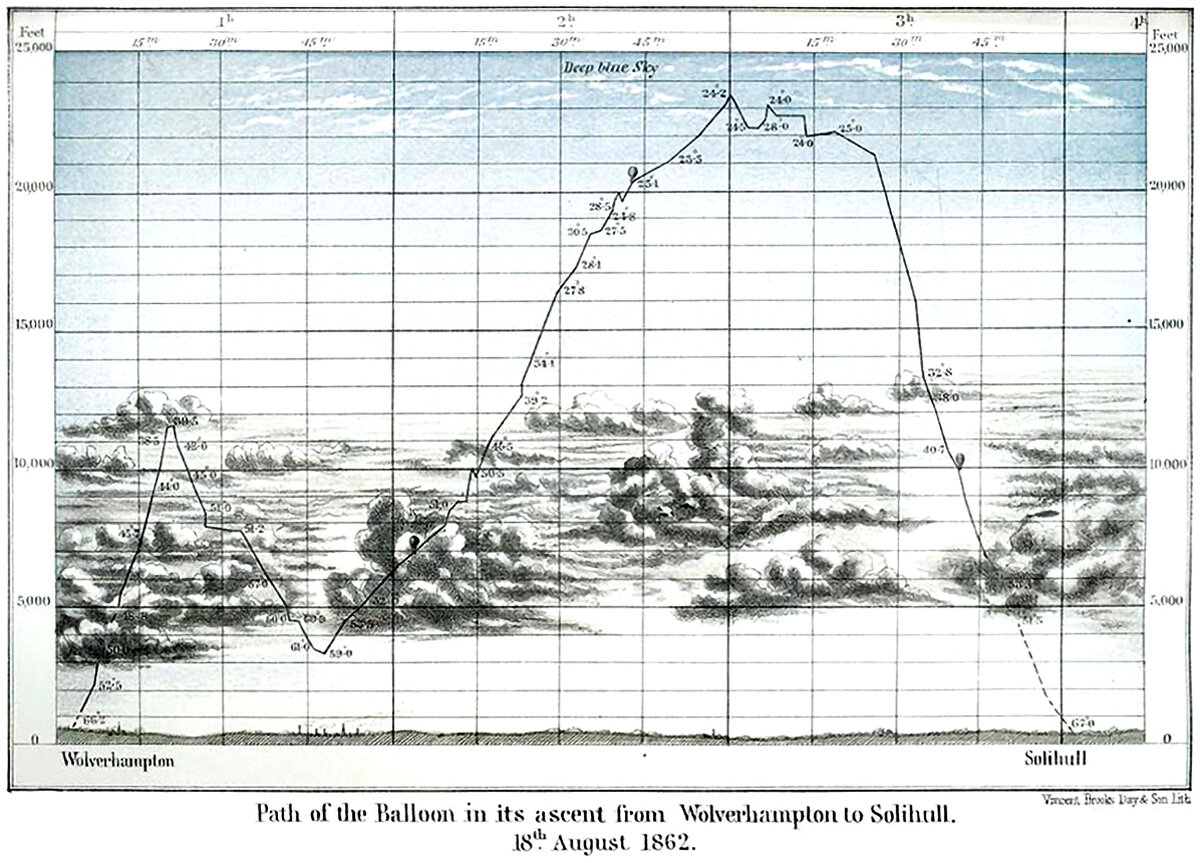
What Goes Up, Must Come Down
I love a drawing that tells a story. Here’s an illustration that does just that; it’s a diagram showing the flight path of James Glaisher’s balloon on 18 August 1862, which travelled between Wolverhampton and Solihull, just outside Birmingham in England. It’s essentially a graph that plots altitude over time, with some embellishments added for effect. The story being told is in the graph’s line, which ascends and descends just as the balloon did during its flight.
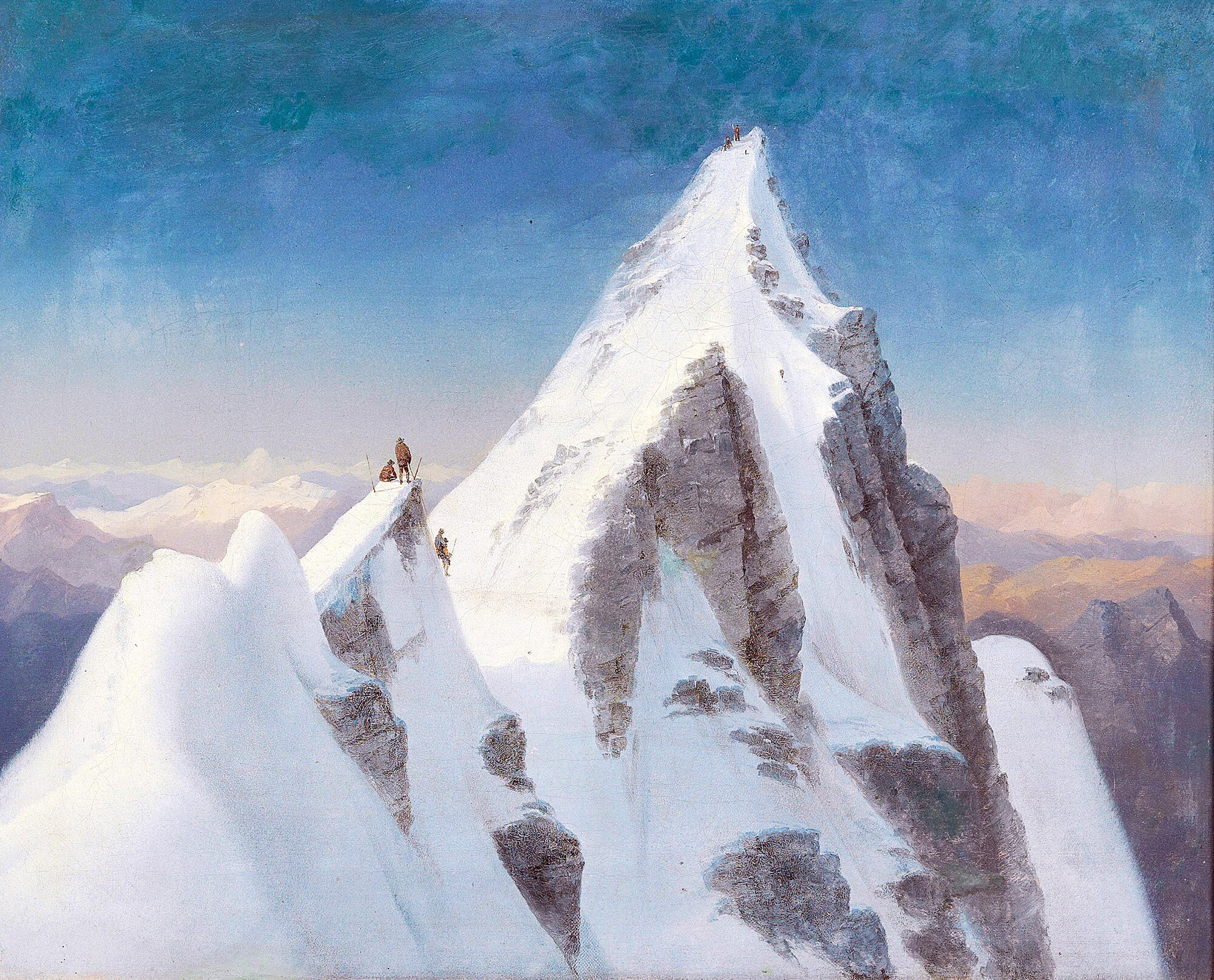
Markus Pernhart’s Großglockner Paintings
The above painting was created in 1871 by Austrian artist Markus Pernhart. It shows the peak of the Großglockner, or Grossglockner, which is the tallest mountain in Austria. It does a great job capturing the contrasting scales of human and mountain. If you look closely, there are two groups of mountaineers pictured atop each peak, dwarfed by the jagged forms of snow and rock. This puts the focus of the painting on the majestic beauty of the mountaintop, rather than the effort it took the mountaineers to reach it. In many ways, these mountaineers are meaningless when compared to the mountain itself. The Großglockner has been around for millennia, and will still be around long after this expedition is finished.
“Is this the summit, crowning the day? How cool and quiet! We're not exultant; but delighted, joyful; soberly astonished.”
-George Mallory, English mountaineer, 1886-1924.
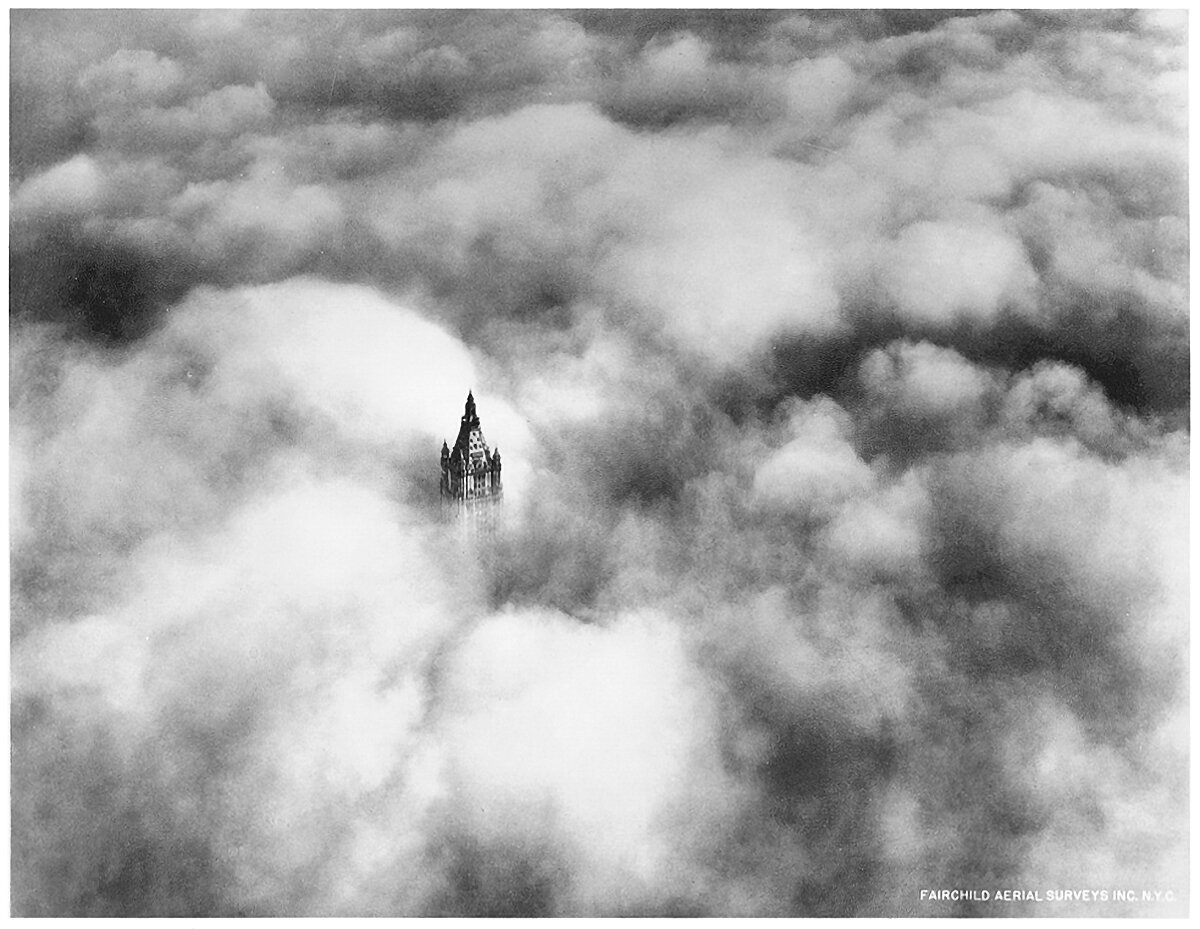
The Woolworth Building Tower Above the Clouds
The Woolworth Building was the tallest building in the world when it was completed in 1913. It towered above Lower Manhattan and dominated the skyline of the city. The above photograph was taken in 1928, and it shows the crown of the tower poking up through the clouds, inhabiting an otherworldly realm of sunlight and clouds. This is an iconic image, because it shows that buildings as tall as this achieve verticality for their occupants. On a day like this, the upper reaches of the building are truly in the sky.

Bipedalism and The Skyscraper
I came across this diagram the other day, and it immediately struck me. It was drawn in 2003 by James Wines of SITE for his Antilia Tower project, and it superimposes a human body on top of a tower section. I’ve previously written about the conceptual link between the bipedal human body and the tower, but this diagram takes it a step further and matches the functions of each part of the body to each part of the tower.
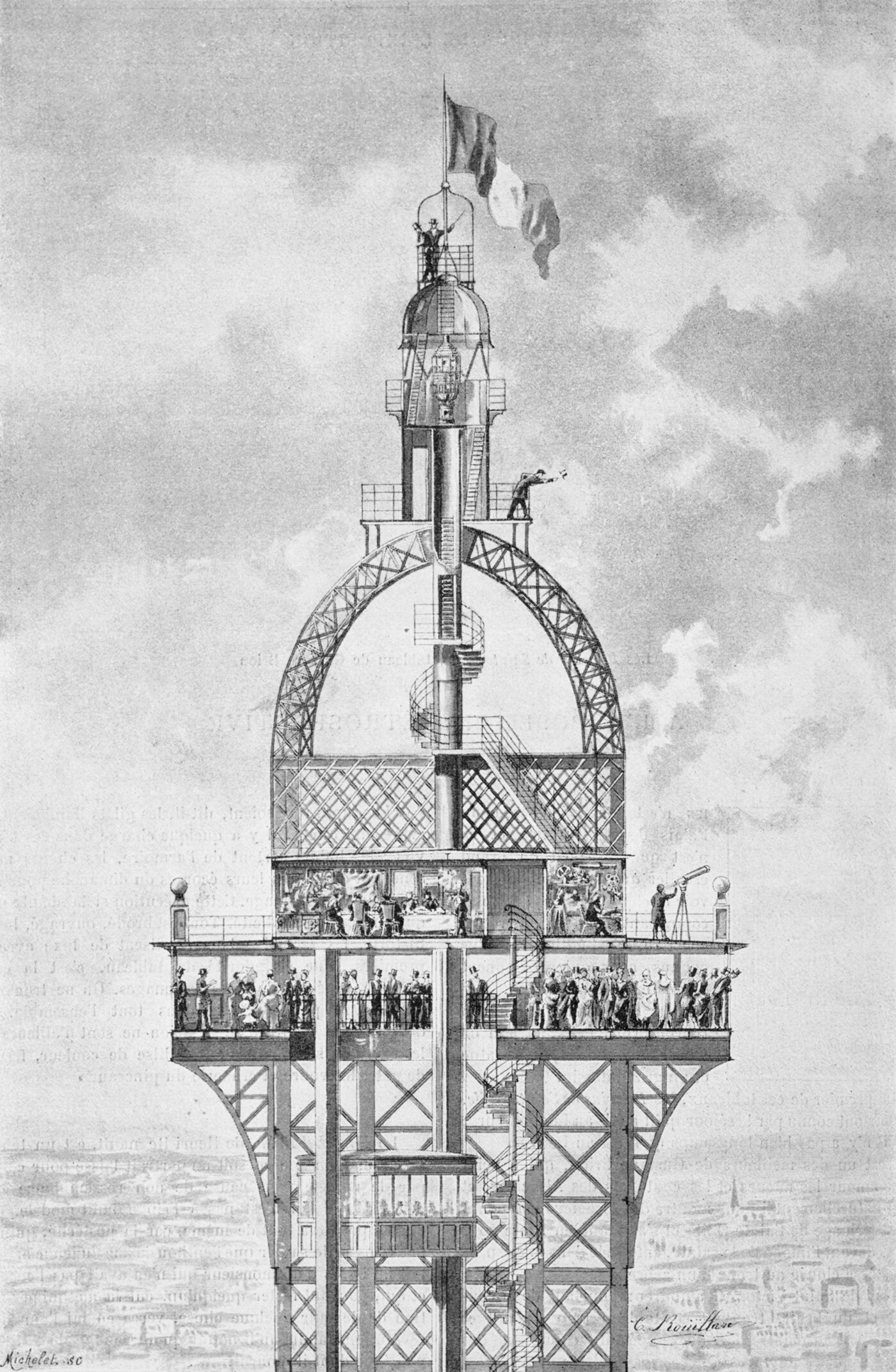
The Secret Apartment at the Top of the Eiffel Tower
Pictured above is an illustration of the Eiffel Tower’s original crown design. You can see the main observation deck, which is packed with people, all enjoying the view atop the tallest building in the world. Unbeknownst to them, however, is the private apartment located on the floor just above them. It was designed by and for Gustave Eiffel as a private space for himself to entertain notable guests and perform scientific experiments. It’s generally referred to as the secret apartment, but it was fairly well-known to the public that Eiffel built the space for himself.
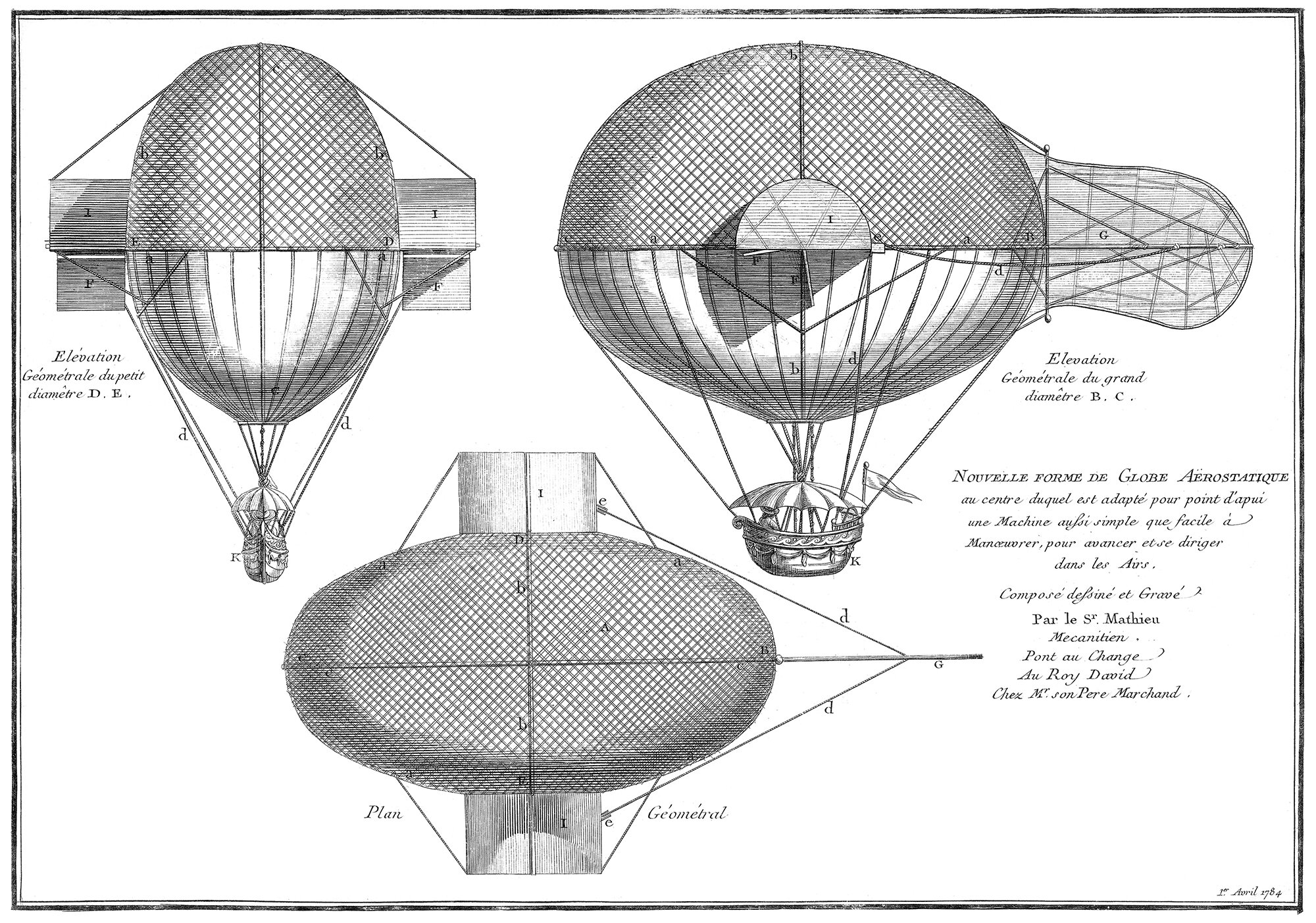
Jean Mathieu’s Aerostatic Balloon
This is a 1784 design for a finned balloon, designed by Jean Mathieu. It’s called Nouvelle Forme de Globe Aërostatique, which means New Shape for an Aerostatic Balloon. It’s an interesting one, because it’s unclear how it’s supposed to propel itself through the air. The design consists of an ellipsoidal balloon with a small basket underneath, housing two pilots, as well as two side hoods and one rear fin.
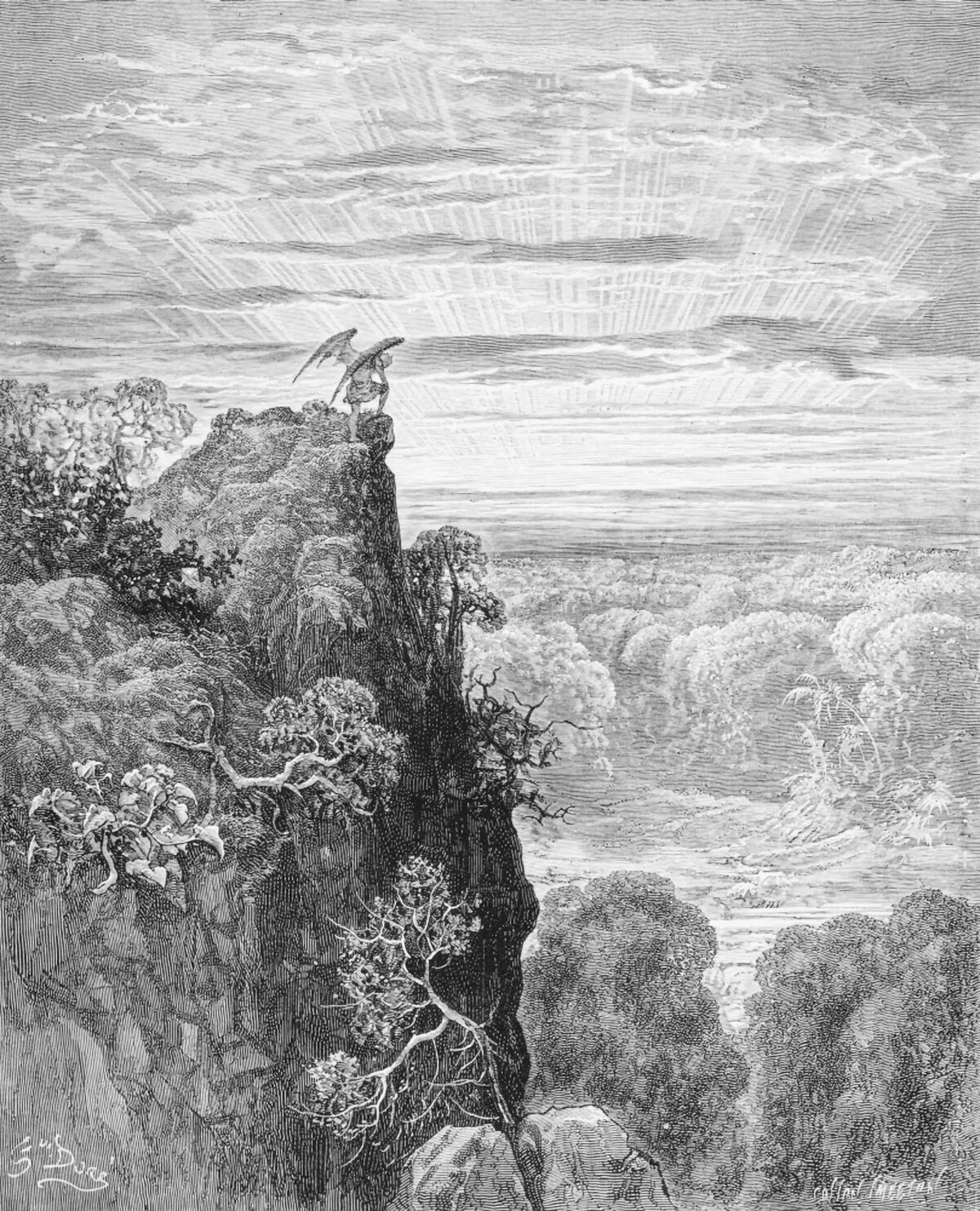
Satan Overlooking Paradise by Gustave Doré
This is an illustration by Gustave Doré for John Milton’s epic poem Paradise Lost. The poem deals with the biblical narrative of original sin, and the first half of the story focuses on Satan and his fall from heaven. In this part of the story, Satan is standing on a mountaintop, overlooking the earthly paradise and considering his plan to corrupt Adam and Eve. Milton is using verticality to enhance the drama of the moment, and by placing Satan in such a high place it allows him to examine his motivations more clearly.

Anecdotes : Earning the Summit
I recently had the opportunity to summit Mount Washington in New Hampshire, and the experience brought to light a few aspects of verticality for me. It’s the tallest peak in the Northeast US, famous for it’s erratic weather patterns. As such, it’s been commercialized with a cog railway, auto road, visitor center and museum in order to attract tourist dollars to the park. This makes for an interesting summit experience, which is quite different than a typical mountaintop. Put simply, this is a summit you don’t have to earn by climbing up to it.
“What is the use of climbing Mount Everest? It is of no use. What we get from this adventure is just sheer joy. And joy is, after all, the end of life.”
-George Mallory, English mountaineer, 1886-1924.

A Mountain of Mountains
Check out this illustration from 1832 of the Principal Mountains in the World. It was drawn by John Dower, and it organizes the world’s mountains into a set of mountains, each from a different region in the world. There are five ‘peaks’, including the British Isles, Africa, Europe, America and Asia. These are ordered from lowest to highest, and they are superimposed on top of one another. This makes it quite simple to compare relative heights across continents, and to understand where the highest peaks are in relation to one another.

A Monument to the Glory of the First Aerial Navigators
Pictured above is the Projet d'un monument à la Gloire des Premiers Navigateurs Aériens, or the Monument to the Glory of the First Aerial Navigators. It was designed by an anonymous author for a site in the Tuileries Garden in Paris, and it consists of a stone arch placed in a fountain, with a balloon flying above it supported by a cloud-like form.
